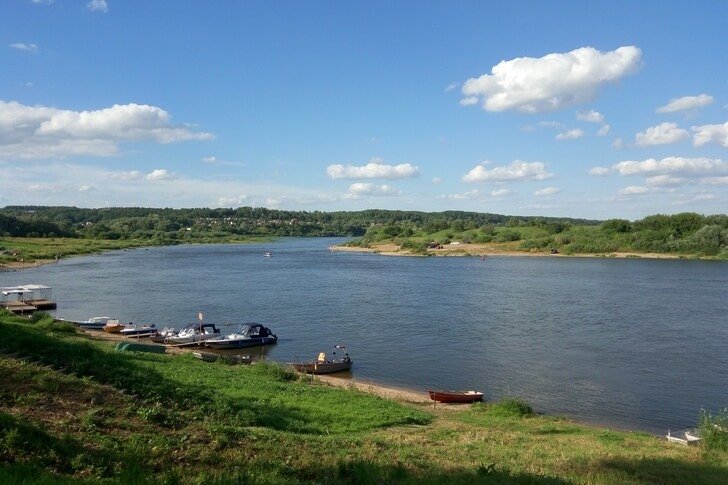Quiet provincial Tarusa is a small town in the Kaluga region, sung in the verses of the incomparable Marina Tsvetaeva. It is mentioned in the ancient chronicles of the 13th century, but its image is a frozen picture of the 19th century with stone temples, city estates of aristocrats and merchants, and small cozy streets.
Tarusa is included in the list of historical settlements in Russia. The life and work of many cultural figures are connected with the city - the poetess M. I. Tsvetaeva, the writers K. G. Paustovsky and N. A. Zabolotsky, the artist V. D. Polenov. You can walk around the entire territory of Tarusa in just a couple of hours, but if you look at local museums and carefully study the expositions, even a few days may not be enough.
What to see and where to go in Tarusa?
The most interesting and beautiful places for walking. Photos and a short description.
Cathedral of Peter and Paul
Before the fire of 1779, after which only 23 houses remained in Tarusa, it became necessary to redevelop the city and build a new church, since the wooden church of St. Nicholas the Wonderworker also burned down. By decree of Catherine II, the construction of the Cathedral of Peter and Paul began in 1785 and was completed in 1790. Later, a refectory and two additional chapels were added. In Soviet times, the bell tower was demolished, and all valuable church property was burned on the main city square. In the late 1990s, the building began to be restored to its original appearance.
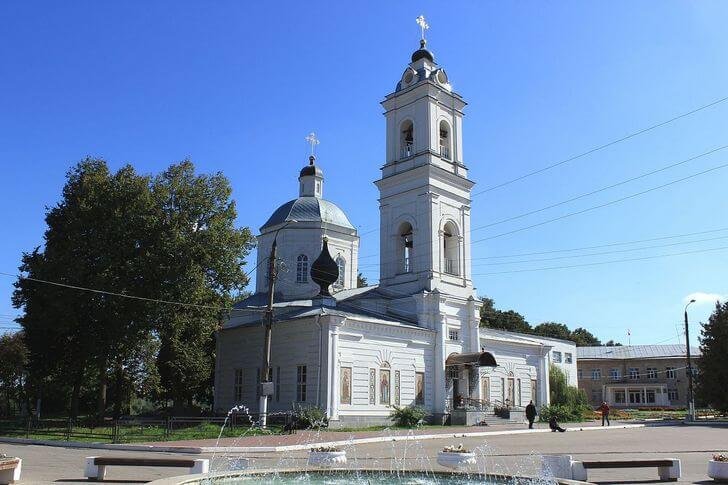
Church of the Resurrection of Christ
The temple of the XVII century, survived several fires due to the fact that it was built of stone on the Resurrection Mountain, which is separated from the city center by a deep ravine. In the 18th century, the building was rebuilt, adding an additional chapel, at the beginning of the 20th century, during the reconstruction, the church was once again expanded and its facade was decorated in the Russian-Byzantine style. Despite the destruction during the Soviet era, the decorative elements still survived.

Monument to Marina Tsvetaeva
M. I. Tsvetaeva loved to visit Tarusa. She devoted many poetic lines to the town. Moreover, the writer wanted to be buried here, but the circumstances were different. In 2006, a monument was erected in Tarusa in her honor. The sculpture stands on the high bank of the Oka in the middle of the observation platform of the city park. Near the bronze figure of Marina, a rowan tree grows - one of the creative images of her poetry.

Monument to K. G. Paustovsky
K. G. Paustovsky lived in Tarusa for more than 20 years. In 1967, he was awarded the title of honorary citizen of the town. In 2012, a monument to the writer was erected on the banks of the Oka. The sculptor embodied in bronze the homely and simple image of Paustovsky: he strokes his faithful dog named Grozny, leaning on the fence. The author of the monument, before making the sculpture, carefully studied the photograph, where the writer was depicted with a dog.
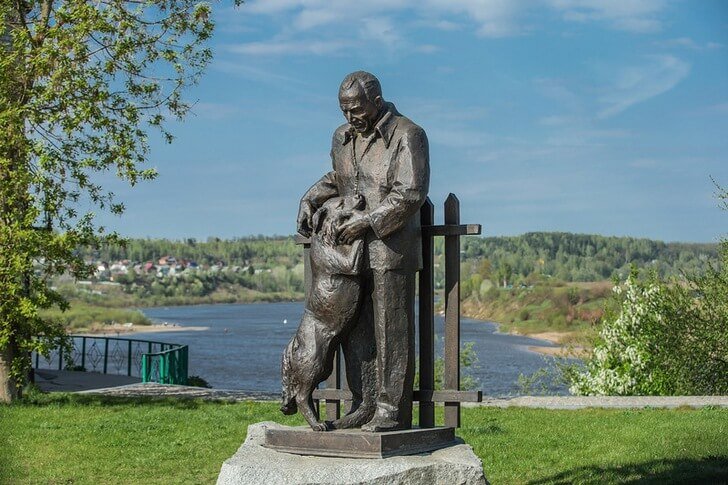
Museum of the Tsvetaev family
Grandfather M. I. Tsvetaeva acquired a small wooden estate at the end of the 19th century. The writer's father was born here, Marina and her sister often came here for the holidays. The museum opened in 1992. It has a small collection of personal belongings of the Tsvetaev family, furniture, household items and books. Various events dedicated to the work of the poetess often take place here.

House-Museum of Paustovsky
The exposition is located on the territory of a small modest house where the writer once lived. The museum opened in 2012, it became the first and only one in Russia dedicated to the life and work of K. G. Paustovsky. Inside, the atmosphere of the 1950s and 60s is recreated, personal belongings are collected and the office is reconstructed, where the author's typewriter and desk, as well as his favorite books, are located.
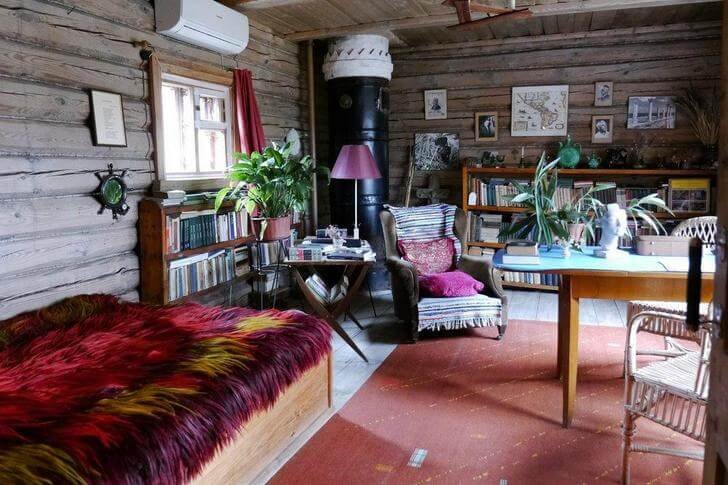
Private Museum of Sergei Zharov
The museum collection consists of furniture and interior items, sculptures and art objects made from scrap metal by a talented local resident S. Zharov. Also here you can see old irons, photographs, records, household utensils and sewing machines. The unusual exposition was launched in 2012; the governor of the Kaluga region became its first visitor. Some of the exhibits are in the house, the other part is in the yard (their number is constantly increasing).
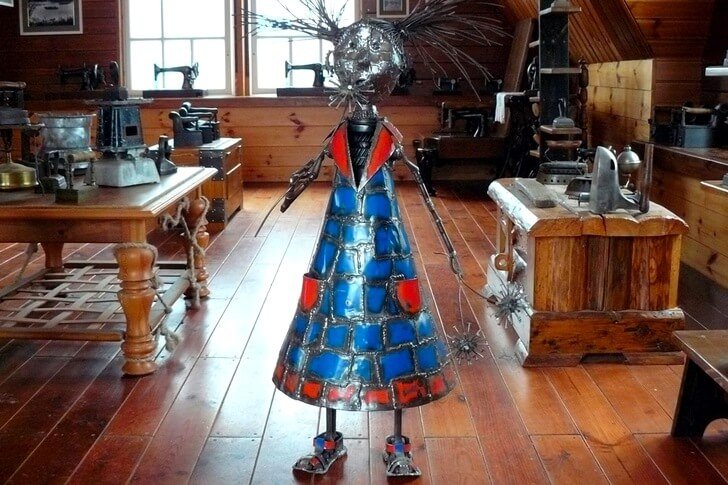
Cenotaph of Marina Tsvetaeva
A memorial stone installed at the place where M. I. Tsvetaeva was supposed to be buried according to her will. It is located under a rowan tree on the banks of the Oka River. The first block appeared in 1962, it was made on his own scholarship by a student of the Faculty of Philology - an ardent admirer of the poetess's work, but at the behest of Marina Ariadna's daughter, the stone was removed a week later. The second was delivered only in 1988.

Tarusa Art Gallery
The art museum appeared in the 1960s at the initiative of local art enthusiasts. At first, the exhibition hall was located in the refectory of the Peter and Paul Cathedral, then the collection moved to another place. The exposition consists of paintings by the Wanderers: P. A. Sukhodolsky, I. K. Aivazovsky, V. D. Polenov, G. G. Gagarin and others. There is also a department of graphics and sculpture, where the works of V. A. Vatagin are presented.
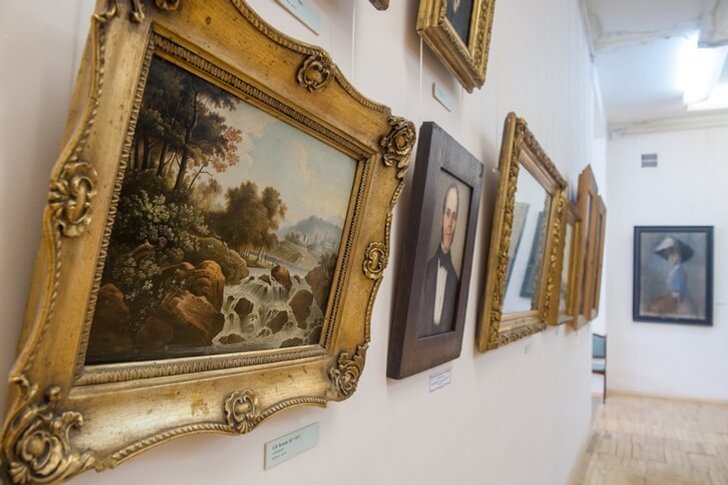
Oka river
The Oka is a major tributary of the Volga. It flows through the territory of several regions of Central Russia, including Kaluga. Tarusa just stands on its picturesque shores, overgrown with forest and dotted with secluded sandy spits. Also, the channel of the water artery passes through Kaluga, Orel, Kashira, Kolomna, Ryazan and other cities. In summer it is nice to relax on the green high banks, go fishing or go boating.
